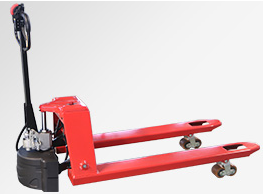News Details
Electric hydraulic transport vehicles are modern logistics handling tools
In modern factories, electric hydraulic transport vehicles are quietly reshaping the landscape of industrial transportation with their unique charm. From workshop production lines to warehousing and distribution centers, these flexible and agile figures are everywhere, gradually replacing traditional equipment such as hydraulic forklifts and manual handling vehicles, and becoming the backbone of logistics handling in the new era.
Compared with fuel driven hydraulic forklifts, electric hydraulic handling vehicles are like leaders in the environmental protection track, demonstrating unparalleled advantages. At present, with the awakening of environmental awareness and the tightening of policy supervision, environmental protection bureaus in various regions are like sharp "ecological guardians", conducting carpet style inspections on factory environmental issues. Once it is found that the environmental indicators do not meet the standards, punitive measures such as fines and production suspension for rectification will follow. As a "source of pollution", the exhaust emissions from fuel powered forklifts during operation are like a lingering haze, often "struggling" in environmental inspections. On the other hand, electric hydraulic transport vehicles, driven by electricity and with zero exhaust emissions, seem to come with a "green pass" and easily pass the environmental protection test, eliminating worries for enterprises.

Compared to bulky and cumbersome forklifts, electric hydraulic handling vehicles have a small and exquisite body shape, allowing them to freely shuttle through narrow passages and crowded warehouses, and easily cope with various complex working environments. Forklifts are not only inconvenient to operate, but also require drivers to hold professional qualification certificates before they can work, which undoubtedly increases labor costs and management difficulties. And the electric hydraulic handling vehicle is easy to operate, without the need for complex training and qualification certification. Workers can become proficient with a little learning, greatly improving work efficiency.
The electric hydraulic transport vehicle, with its green and environmentally friendly power system, effectively reduces environmental pollution and energy consumption; With flexible and convenient operational performance, the transportation process has been simplified, saving manpower and time costs.

